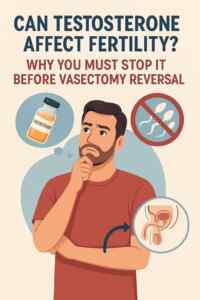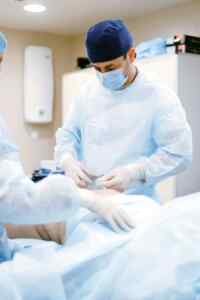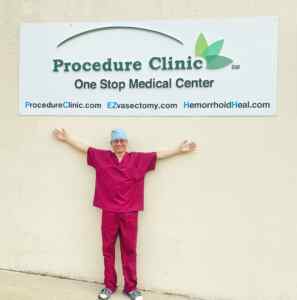Many men use testosterone replacement therapy (TRT) to improve energy, mood, and muscle strength. However, for men who plan a vasectomy reversal, continuing testosterone can dramatically reduce the chance of success.
Here’s why understanding the connection between testosterone and sperm production is essential before surgery.
🔹 What Testosterone Normally Does in the Body
Your body’s sperm production depends on a precise hormonal communication between the brain and the testicles:
1. The hypothalamus releases a hormone called GnRH.
2. The pituitary gland then sends two messenger hormones:
LH (luteinizing hormone) – signals the testicles to make testosterone locally.
FSH (follicle-stimulating hormone) – helps mature sperm cells.
3. These signals keep intratesticular testosterone levels extremely high—many times higher than what is measured in the bloodstream—allowing sperm to form and mature properly.
🔹 What Happens When You Use Testosterone from Outside
When you take testosterone injections, gels, or pellets, your body senses that your hormone levels are already high.
In response, the brain shuts down its own signal to the testicles:
↓ GnRH
↓ LH and FSH
↓ Intratesticular testosterone
❌ Sperm production stops
Even though you may feel stronger or more energetic, your testicles are essentially “switched off.”
Many men on TRT develop severely low sperm counts or even azoospermia (no sperm at all).
🔹 Why This Matters for Vasectomy Reversal
A vasectomy reversal reconnects the tubes that carry sperm.
However, if no sperm are being made, even the best surgical technique cannot restore fertility.
Therefore, men must stop testosterone therapy well before their reversal surgery to allow sperm production to restart naturally.
🔹 How Long Does It Take to Recover Sperm Production?
The recovery timeline varies based on your age, how long you’ve been on TRT, and the dosage used. It could take 3–6 months for sperm production to return after stopping testosterone. Up to 12 months for full recovery in long-term users.
🔹 Steps to Take Before Vasectomy Reversal
1. Stop all testosterone or anabolic steroid use as soon as you plan to do vasectomy reversal. Ideally, at least 3–6 months before the procedure.
2. During this time, your hormone doctor may prescribe medications such as:
a. Clomiphene citrate (Clomid) – helps the pituitary restart natural hormone signals.
b. hCG (human chorionic gonadotropin) – mimics LH to stimulate testosterone production in the testicles.
Both can help “wake up” sperm production faster.
🔹 The Bottom Line
Exogenous testosterone can make you feel good—but it can also make you temporarily infertile. If you’re planning a vasectomy reversal, restoring natural hormone balance first is essential.
By discontinuing TRT, monitoring your hormones, and allowing sperm production to recover, you maximize your chance for success—and for a healthy pregnancy after reversal.
Steven Shu, MD, MBA
Medical Director, One Stop Medical Center | Procedure Clinic
Specializing in office-based vasectomy and vasectomy reversal procedures with local anesthesia.




